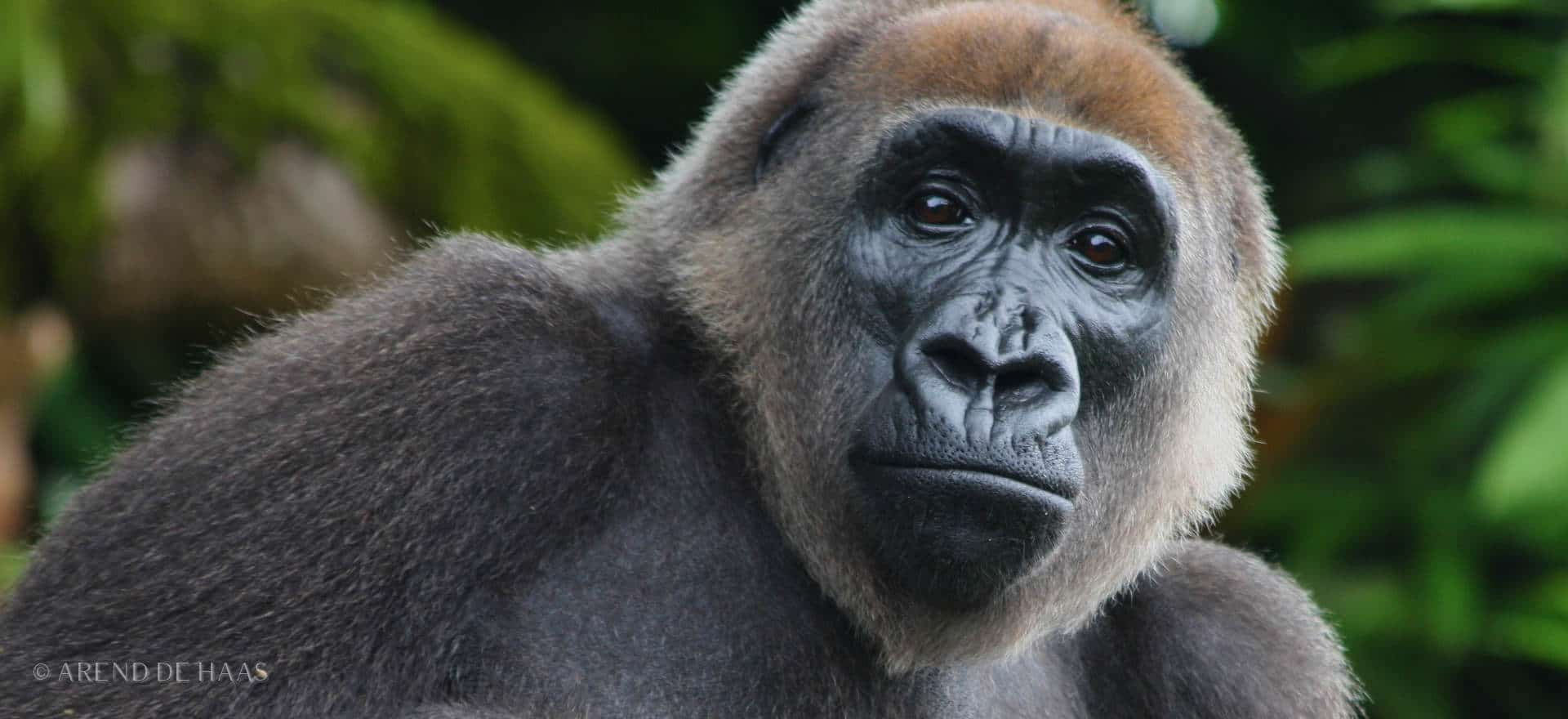CROSS RIVER GORILLA REGIONAL ACTION PLAN
In 2007, a Regional Action Plan for the conservation of the Cross River Gorilla was devised. This plan will need a $4.6 million investment over 5 years, a third of which has already been committed.
The Action plan recommended a number of actions to be taken across the range:
- Promoting education and awareness
- Promoting community participation in conservation
- Transboundary conservation planning
- Development of ecotourism and gorilla viewing
- Improved legislation and law enforcement
as well as site-specific activities, including the establishment of new conservation areas, safeguarding habitat corridors and improving the management of existing conservation areas.
Table 3: Recommendations for specific sites
| Recommendation: | Site(s): |
| Improve law enforcement and institute patrol system | ALL |
| Improve protected area infrastructure | Afi, Okwangwo |
| Develop/finalise management plan/strategy | ALL |
| Re-trace/demarcate conservation area boundaries | ALL |
| Take steps to upgrade national conservation status | Takamanda, Mone, Mbulu, Kagwene |
| Elaborate community-based land-use plans within sites, in buffer zones and/or in corridors | Afi, Mbe, Mbulu, Bechati-Fossimondi-Besali |
| Develop ecotourism plans (not necessarily ones focussed on gorillas) | Afi, Okwangwo |
| Develop fire-protection plans | Afi, Mbe, Kagwene |
Recommendations from Regional Action Plan (13)
The Action Plan recommended a landscape-based approach to conservation, due to the dispersed nature of the remaining gorillas, and the national boundary passing through their range. Cooperation between government agencies, NGOs and locals across this boundary will be of great importance. Conservation managers should coordinate their activities, particularly where gorilla habitat is continuous across the border. Raising awareness of the Cross River Gorilla and the importance of conservation among local people will be essential to the success of conservation projects.
The levels of legal protection vary between sites, and in most cases need to be raised. Unprotected areas are at risk from encroaching farmland, and together with Forest Reserves, could be targeted for logging in the future. The creation of a Sanctuary at Kagwene will help to protect this site (15), and the National Park formed from Takamanda Forest Reserve will ensure the future safety of several groups of gorillas. (16) In order to ensure that migration between groups continues, the forest corridors linking them must be protected. Recolonization of lowland forests is also a possibility if the pressure of hunting and habitat degradation that left the gorillas in their high mountain ranges is relaxed.
Other suggestions have been to divert the highway that currently divides Afi from the rest of the range, or finding some way of allowing gorillas to cross it, and relocation of the enclaved villages. These are expensive, complicated projects, and ones which locals might not support. A simpler option than relocation of a number of villages might be to mark out a core conservation zone within the Cross River National Park, in which no exploitation of forest products would be allowed.
The removal of gorillas, either to translocate to another part of the range where they might be less isolated or have less conflict with humans, or to send abroad to a zoo such as Monkeyland in South Africa, have also been considered. A captive population would ensure survival of the subspecies, and could be used to breed gorillas for reintroduction. The gorillas could also be exchanged for technical help and equipment from the receiving institution.
The legislation protecting gorillas, and its enforcement could also be improved. Many people have traditionally had to rely on forest resources, so if these are to be successfully protected, it is important to provide alternative incomes. The skills of former hunters can be recruited as research assistants, rangers, and if tourism is developed, as tour guides.  This reduces the threat of hunting, provides alternative employment, and performs useful conservation-related work.
Ecotourism has been suggested as a way of protecting the forests and providing jobs for locals. This will need to be carefully evaluated before it can be introduced. If it is decided to habituate gorillas so that they can be viewed by tourists, they will lose their natural wariness, which currently protects them from hunters.
Reducing the demand for bushmeat can also reduce hunting. The Biodiversity Preservation Group run a project called “Only Livestock” which buys domestic animals from areas where they are abundant and sells them to locals at a reduced cost, as an alternative source of protein to bushmeat. They also recommend the breeding of ‘micro-livestock’ such as rabbits or poultry, and adaptable native animals such as duikers, porcupines, cane rats, giant rats, pythons, crocodiles and snails. A decrease in occupational hunting has been observed in areas where this has been put into practice, e.g. Obudu, Bateriko (Baki), Ogoda (all in northern Cross River State).
Poaching in surveyed areas appears to have decreased, thanks to the presence of researchers, and patrols. Encroachment is still a serious problem. Better demarcation of the boundaries of protected areas could help to reduce both these problems. Currently, people can claim ignorance if caught inside the lines. Increasing patrols and providing equipment for them, and improving law enforcement with the help of local communities, will also help.
Since the Cross River Region is an important habitat, and home to many rare and unique species in addition to the Cross River Gorilla, conservation plans should consider how best to protect the forest for all of these creatures. Then, by protecting the Cross River Gorilla, we can also conserve a whole range of forest species.

